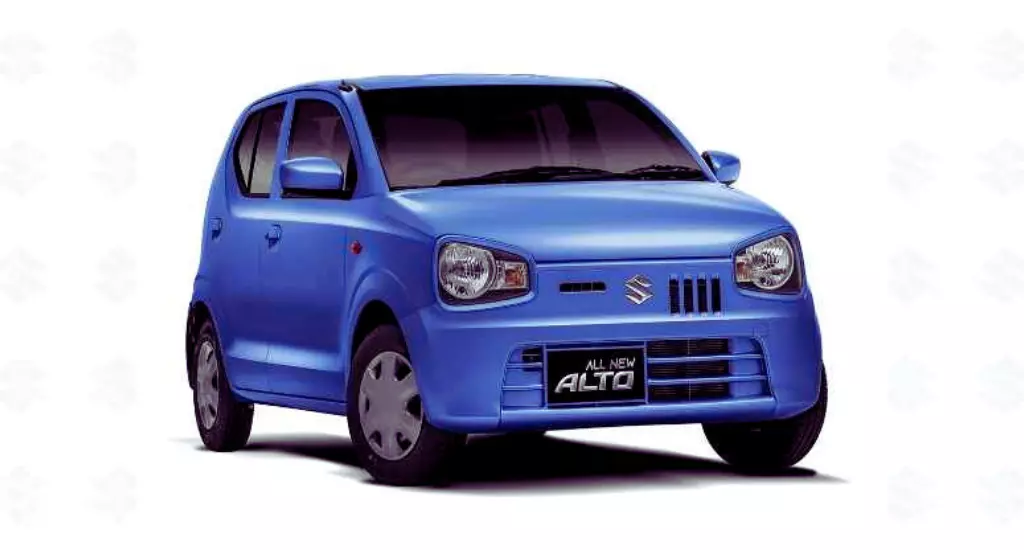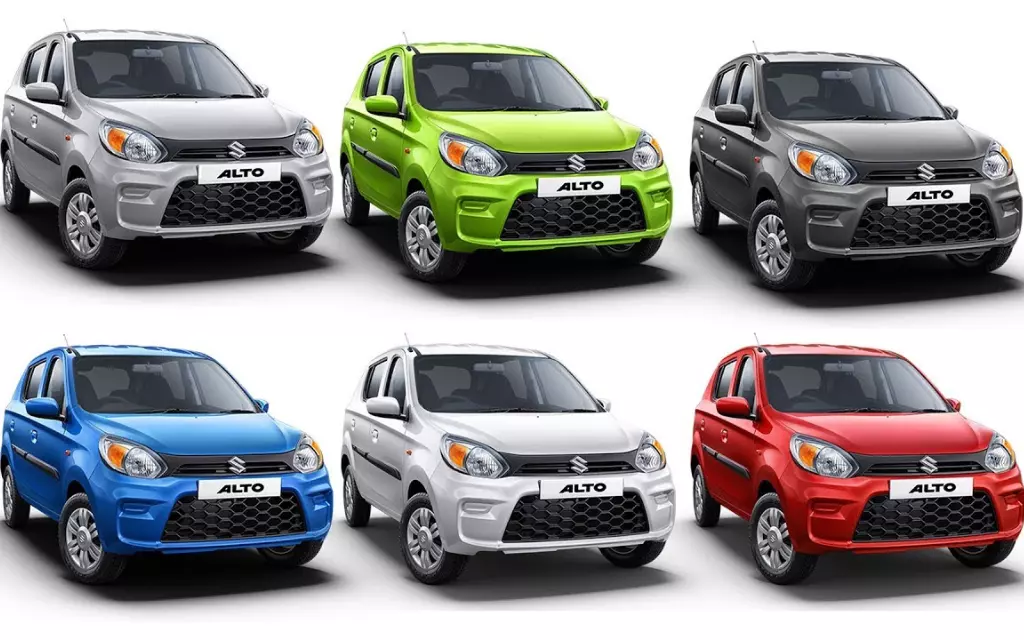Since 1979, Suzuki has manufactured the Alto, an essential vehicle. The initial version debuted in 1979, and since then, the model has gone through eight generations of refinement as it has been produced in a wide variety of nations. Initially developed as a commercial vehicle offshoot of the Fronte, the Alto eventually surpassed the Fronte in popularity and supplanted the Fronte moniker by 1988.(1)
In Japan and other export countries, the Alto is classified as a city car, but the nameplate has been used on various vehicles. Here are different alto colors presented in this article.
The Alto nameplate was intended for the Japanese market’s business-oriented Fronte passenger vehicle. “alto” is a musical phrase for a high voice. Back when it was first on the market, the Alto was only offered as a three-door “light van” with few features. Suzuki rarely used the “Fronte” nameplate for export. Instead, all models were referred to as “Alto” in other countries. As a result, properly speaking, the majority of Alto colors shipped overseas in the 1980s were rebadged Suzuki Fontes. To make them more marketable abroad, its exporters occasionally upgraded the engines and the appearance of the vehicles they sent over. There were 11 Generations with The-K Series 2015 of Maruti Suzuki.
So, the SS40 Fronte from Japan was rebadged as the SS80 Alto with a larger 660 cc engine for sale in other countries. Because the boundary between essential business vehicles and passenger automobiles was blurred in 1989, the Alto badge became increasingly popular in Japan. In March of 1989, service ended for the Fronte line. Since the early 1990s, the Alto plate has been used on export models of several Indian-built variants because the key restrictions and Indian vehicles limit neither.
The Eighth Generation debuted at the Pakistan Auto Show on April 12, 2019. (PAPS). Three distinct models—the “VX,” “VXR,” and the “VXL”—are available for purchase. The “VX” is the barebones entry-level model, without air conditioning or other frills, and it comes only with a 5-speed manual transmission; the “VXR” adds those features plus power locks, power steering, etc.; and the “VXL” is the top-tier, luxury model, which also features air conditioning, anti-lock brakes, and an automated manual transmission (AGS).
Pakistan Unveils the 8th Generation.

Pakistan is now one of the few nations in the world to produce essential vehicles domestically, thanks to the local production of the Alto. Pakistan is now the only country outside Japan to make this Generation of Suzuki Alto. The second-generation Alto colors from Pak Suzuki Motors share its exterior design and powertrain with its Japanese counterpart. Because of its lower compression ratio (10 vs. 11.5), lack of VVT, and other factors, it is rated at 39.5 PS (29.1 kW; 39.0 hp) and 56 Nm (41.3 lb-ft; 5.7 km), which is less than the Japanese variant.
Japan debuted the eighth-generation Alto in December 2014. Suzuki’s new Alto was the company’s first automobile built on the compact and lightweight HEARTECT platform. A torsion beam type rear suspension, rather than the previous Alto’s 3-link setup, is also a first for the line (except for all-wheel-drive models). The vehicle is 60 kg (132 lb.) less than its predecessor thanks to its new lightweight base, lighter body, engine, seats, and simpler rear suspension. Using “Suzuki Green Technology” for the body and the engine, the car’s fuel consumption was reduced to an alleged 37 km/L (100 mpg-imp; 87 mpg), which is highly efficient.
Models of the Suzuki Alto with Their Various Paint Schemes
There are six distinct hues to choose from when purchasing a new Suzuki Alto color. Here are some of them:
- Silky Silver
- Downtown’s Red
- Shades of Mojito Green
- Granite Gray
- Uniformly White
- Blue Cerulean
Suzuki Alto Specifications
The new Alto comes standard with five different trim levels. Passenger models include the “F,” “L,” “S,” and “X,” while the “VP” designates a business van model. Each is propelled by a pre-existing K06A 658 cc (40.2 cu in) inline-three engine with natural aspiration. Increases in compression ratio and implementation of an Exhaust Gas Recirculation (EGR) system (not available on “F” trim with manual transmission or “VP” van) resulted in significant fuel economy improvements. In contrast, the intake and exhaust system modifications improved the engine’s performance at low and medium speeds. By using a cylinder head that doubles as an exhaust manifold and streamlining the catalyzer case, we significantly reduced the vehicle’s overall weight.
In March 2015, a daily-use sportier model named “Turbo RS” was released, while in December, the more barebones performance-tuned “Works” variant reappeared after 15 years. The turbocharged K06A engine in these high-performance vehicles generates 64 PS (47.1 kW) and 98 Nm (72.3 lb-ft) of torque, with the latter figure being 10.0 kg for the “Works” model. Two gearbox options are available: a 5-speed manual (except for the “Turbo RS”) or an automated manual transmission with higher gear ratios. New, wider, high-performance Bridgestone tires, a KYB shock absorber, vented front disc brakes, a strut bar to boost body stiffness, and a rear stabilizer bar for front-wheel-drive vehicles all contribute to the improved handling (also available for “X” trim).
In contrast to the previous Generation, the current one does not include a 50:50 split-folding rear seatback (which still has a reclining back and adjustable headrest, save for “VP,” “F,” and “L” trims). Black and white two-tone paint jobs were applied to all models powered by naturally aspirated engines. In 2018, the “L,” “S,” and “X” trim all got new dark blue upholstery. Interiors of the “Turbo RS” and “Works” variants are black with red accents, and both have a leather-wrapped steering wheel, paddle shift for AGS vehicles, and a tachometer. The “Works” package includes a turbo boost gauge, racing front seats by Recaro, and stainless steel pedals.
All customarily aspirated variants come standard with halogen headlights and 13-inch steel wheels with hubcaps (apart from “VP” and “X” models, which feature unique two-tone paint jobs). Sportier bumpers, side skirts, a rear upper spoiler, fog lights, stickers, Enkei 15-inch aluminum wheels (also available for “X” trim), red brake calipers (standard on the “Works”), and HID headlights distinguish the “Turbo RS” and “Works” variants.
Additional electronic stability control and a collision avoidance system further enhance safety. In JNCAP crash testing, the vehicle received a 4 out of 5-star rating. In June 2019, Alto released a limited-edition model dubbed L Limited to commemorate the model’s 40th anniversary. The vehicle starts with the “L” trim but includes upgrades and extras seen on higher models.
Starting in December 2018, the “Turbo RS” trim level would be phased out, with the “X” trim level going the same way in October 2020, the “VP” commercial van in August 2021, and the ninth Generation taking its place four months later.
Sources
- OTR (2020). “All generations of Suzuki Alto in Pakistan” Carpedia https://carpedia.pk/blog/all-generations-of-suzuki-alto-in-pakistan/
- IndusMotor (2020). “THE HISTORY OF MARUTI ALTO” IndusMotor https://www.indusmotor.com/blog/history-of-maruti-alto
- Reuters (2022). “Maruti Suzuki Believes Government Will Support ‘Green’ Tech Beyond EVs, CEO Says” Gadgets360 https://www.gadgets360.com/transportation/news/maruti-suzuki-government-support-ev-green-technology-electric-vehicles-hybrid-cars-3179316
- Abd-Alla, G. H. (2002). “Using exhaust gas recirculation in internal combustion engines: a review. energy conversion and management” ScienceDirect https://www.sciencedirect.com/science/article/abs/pii/S0196890401000917
- Lucente, G., Montanari, M., & Rossi, C. (2007). “Modelling of an automated manual transmission system” Mechatronics https://www.sciencedirect.com/science/article/abs/pii/S0957415806001176















